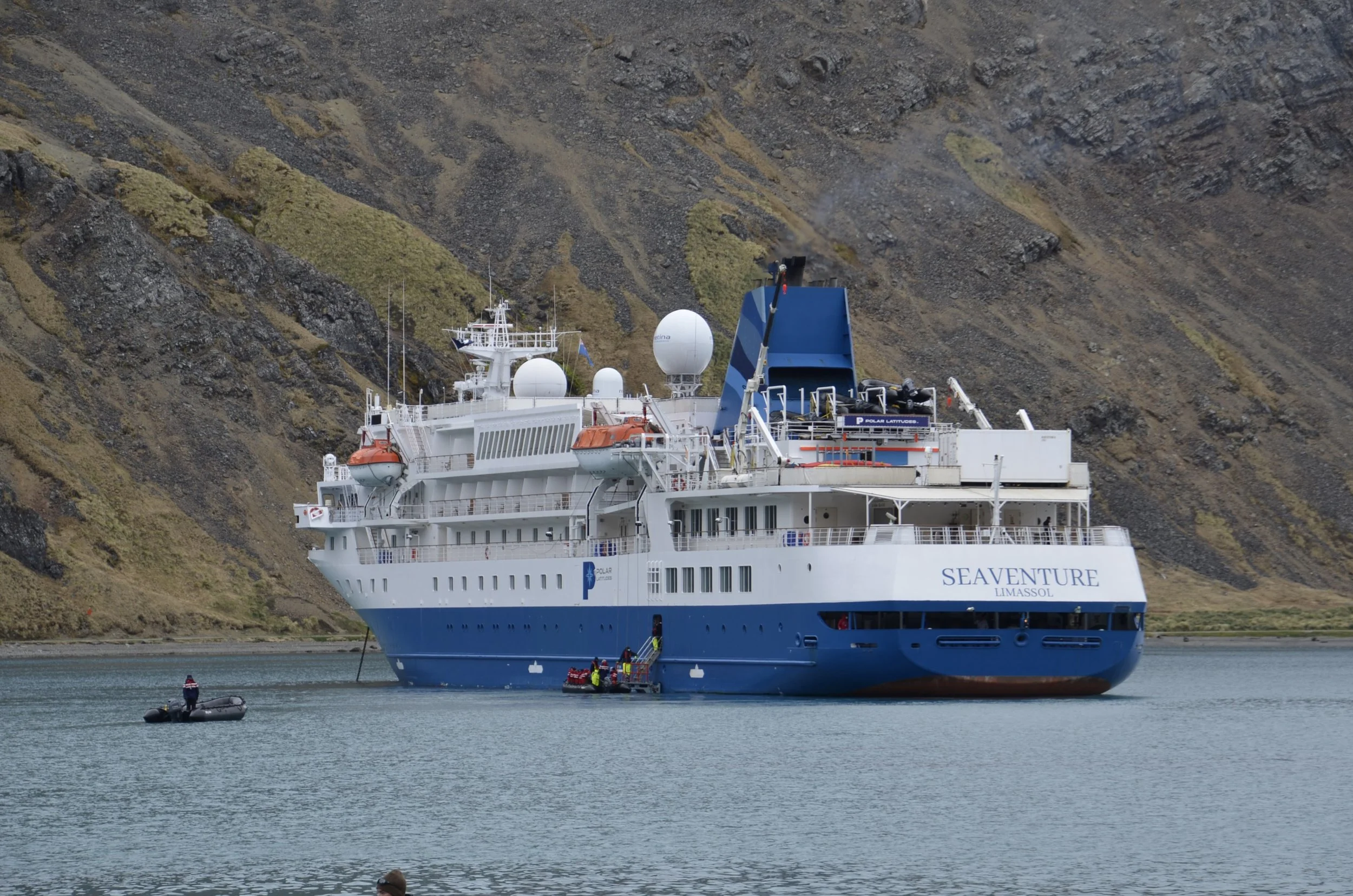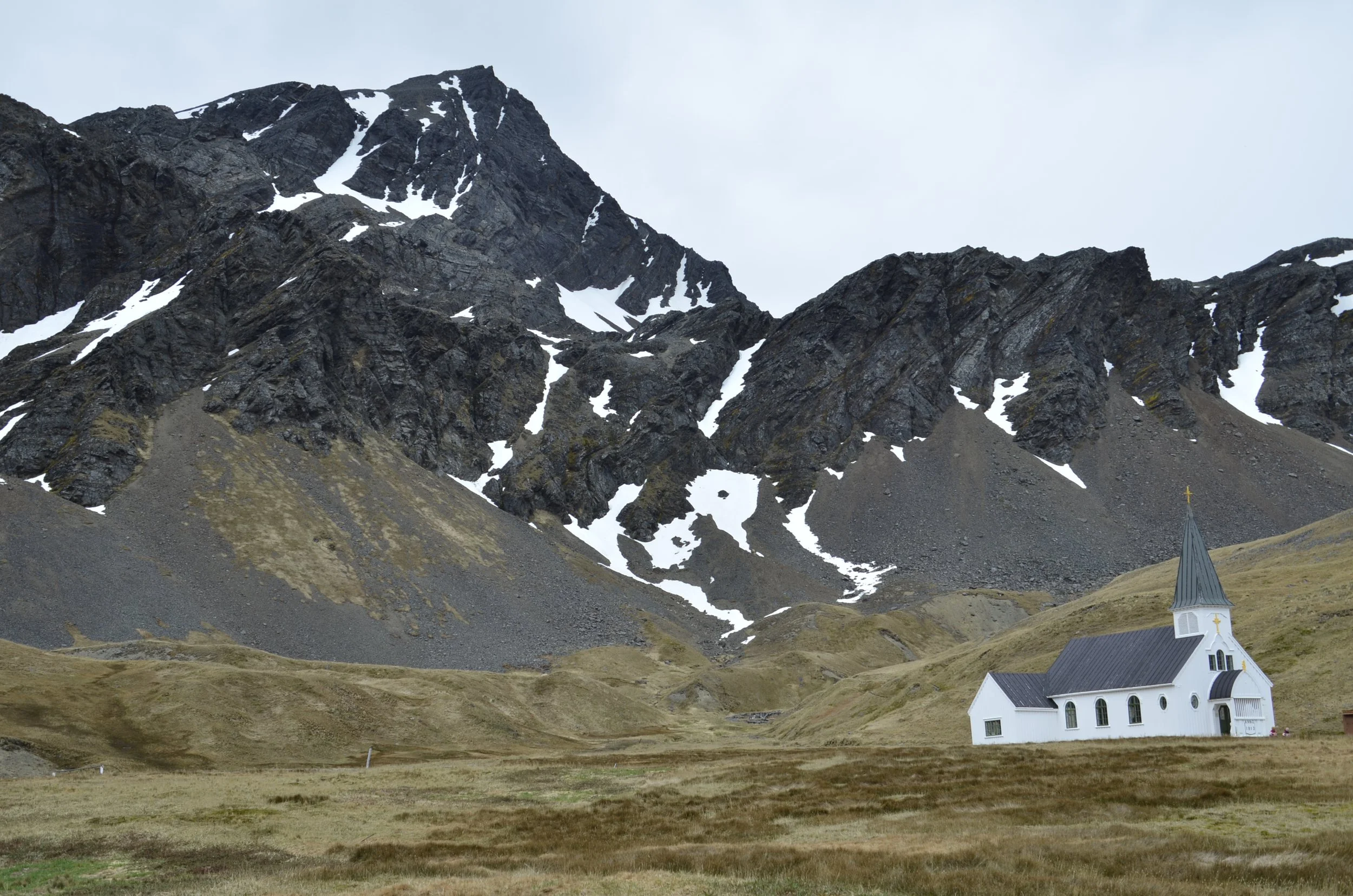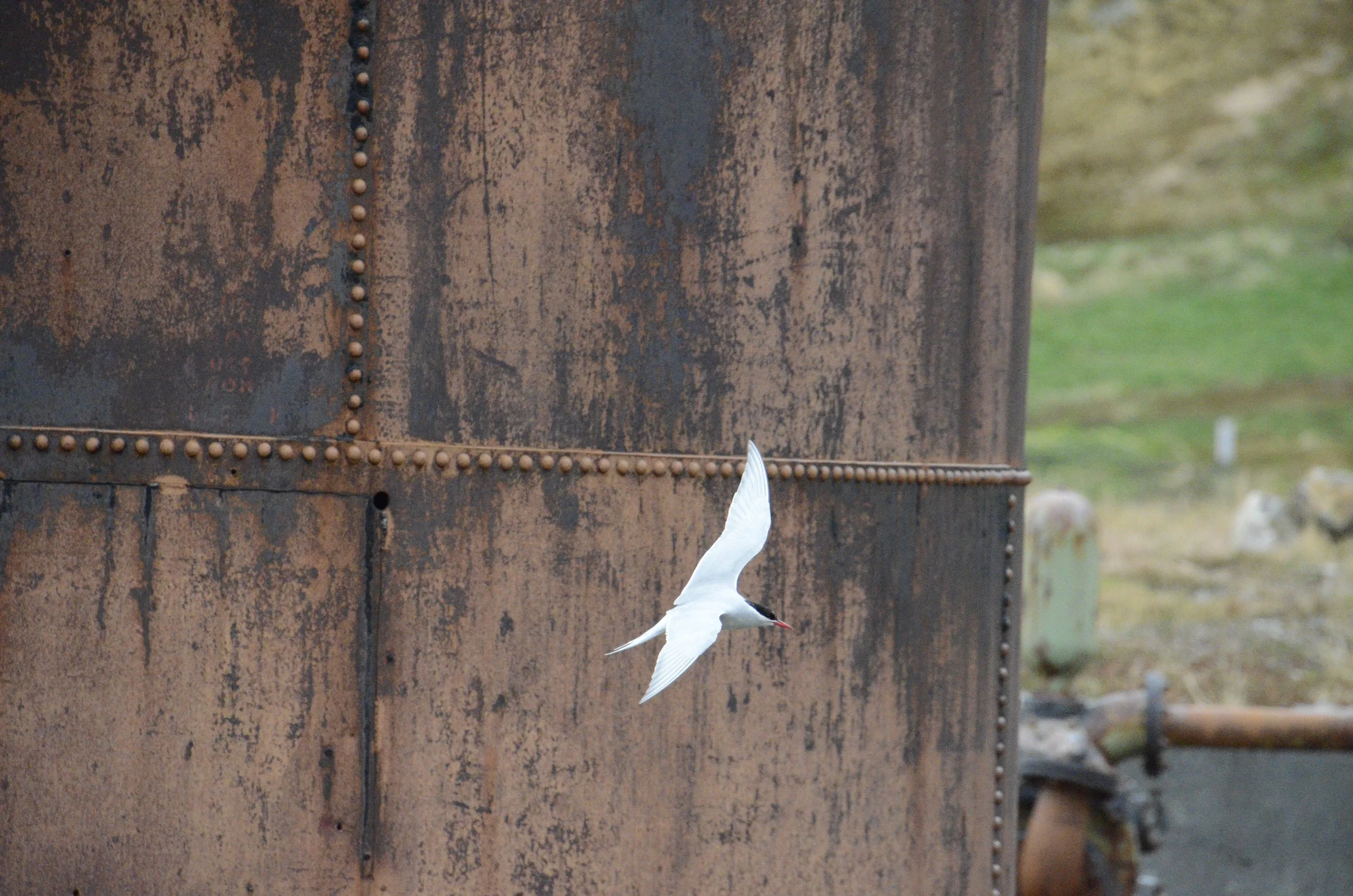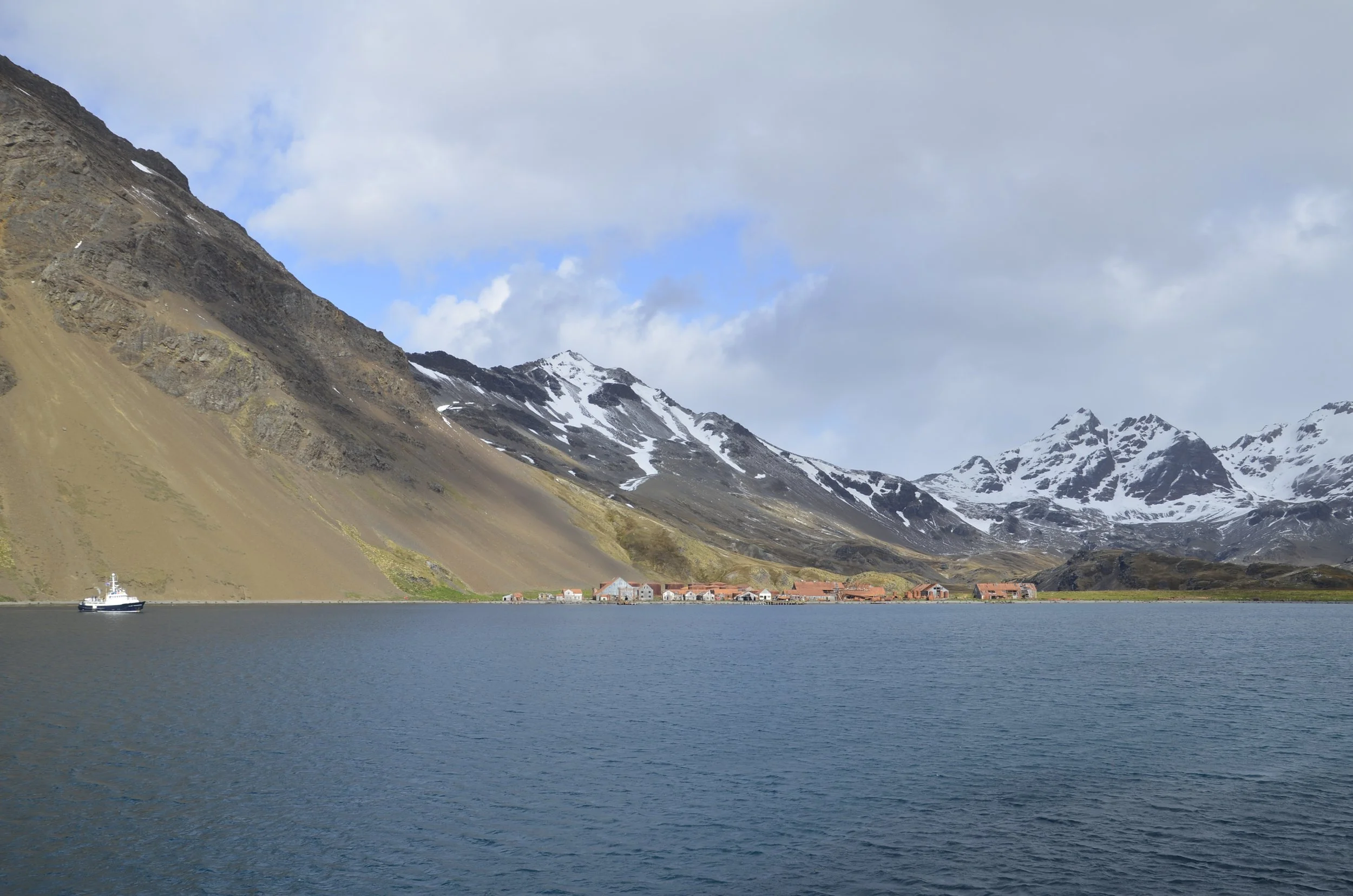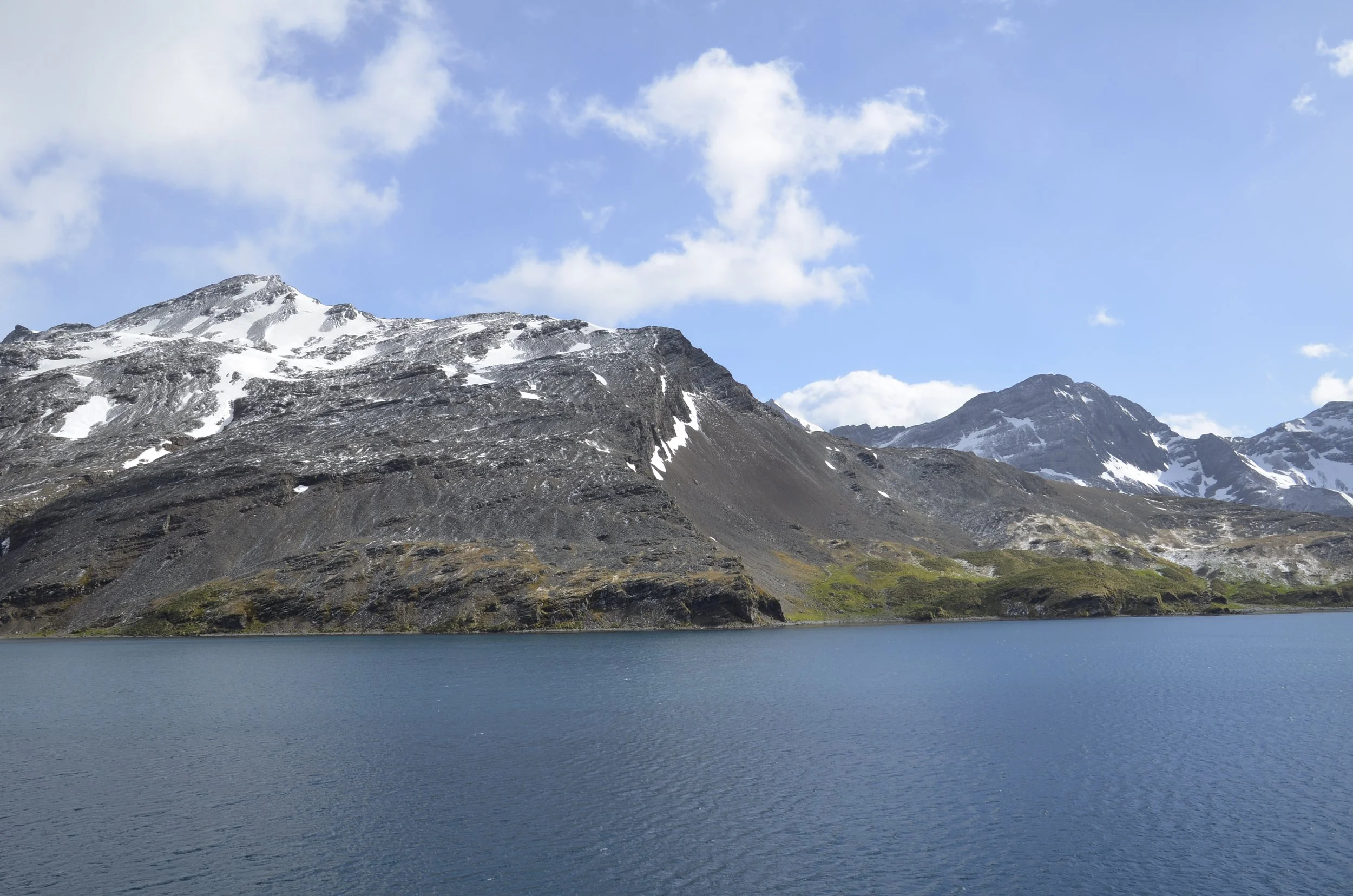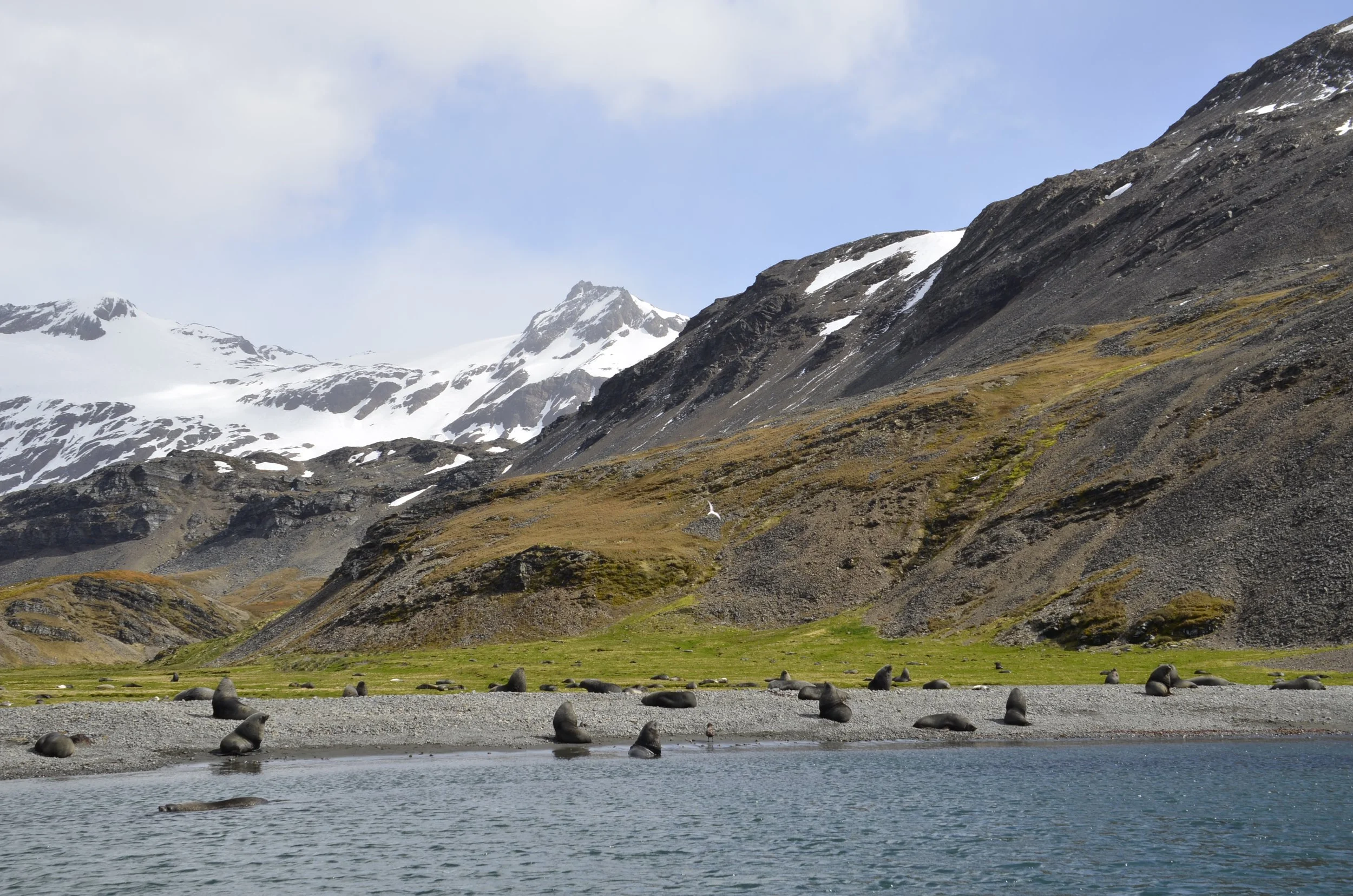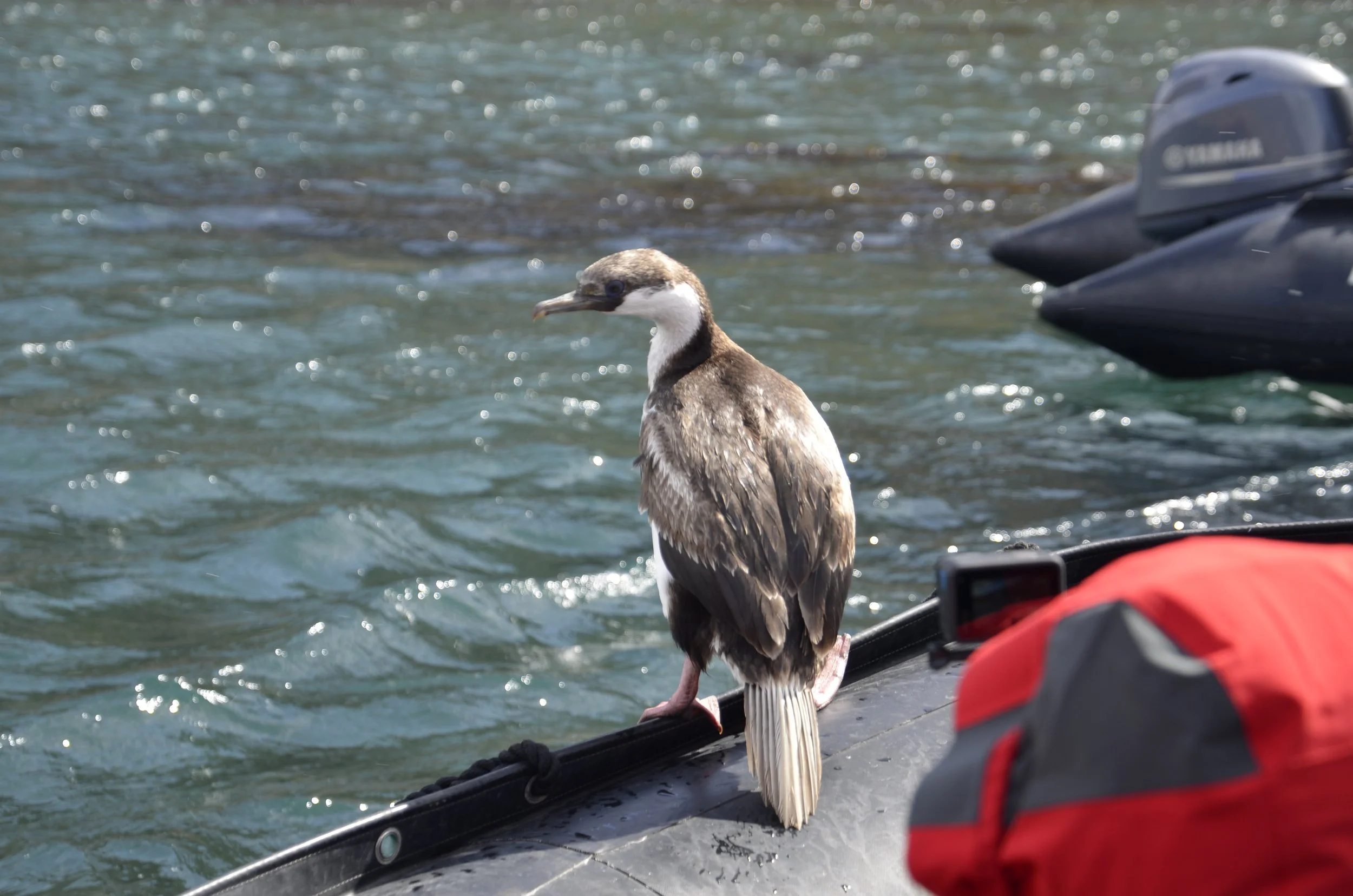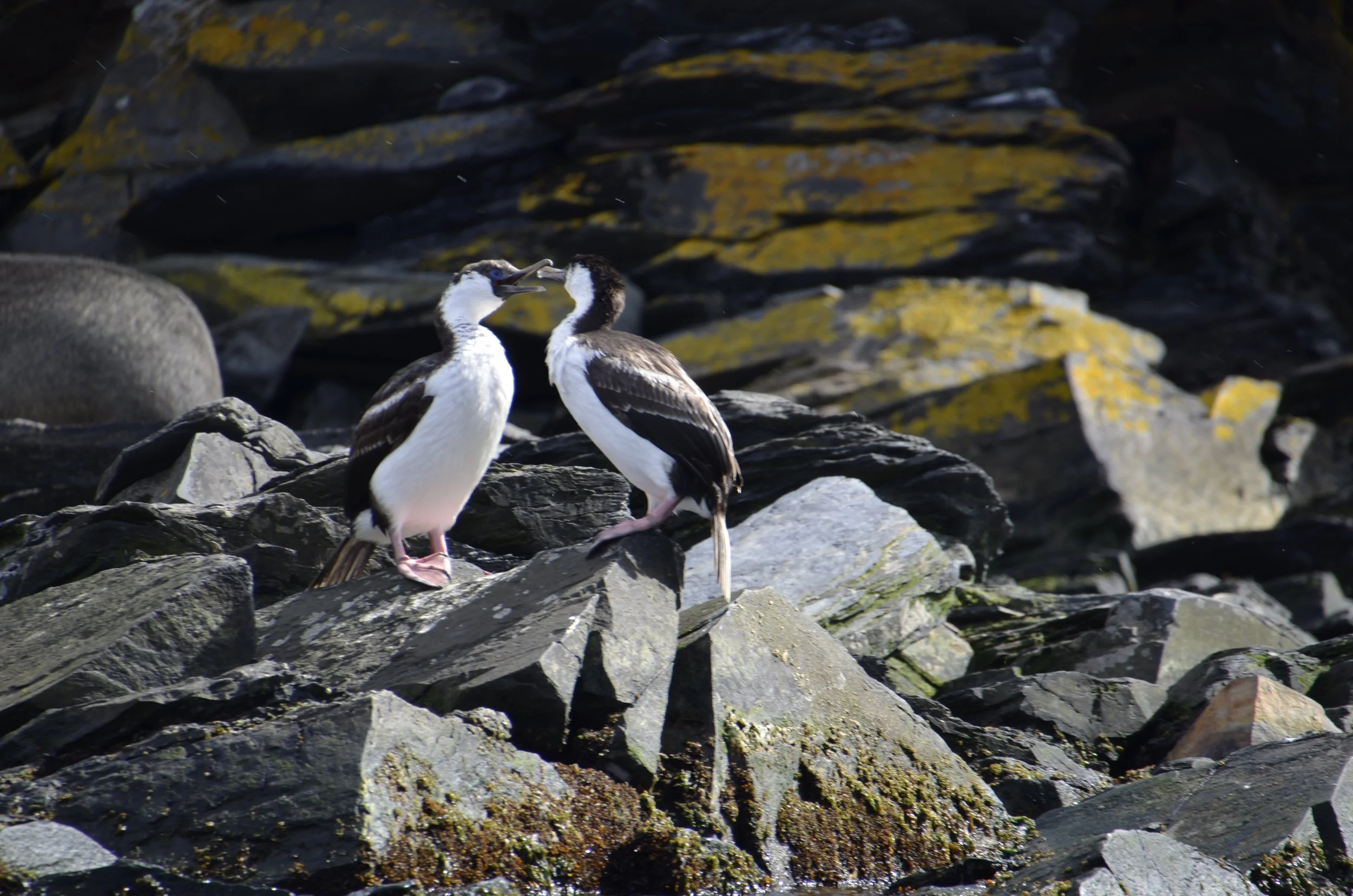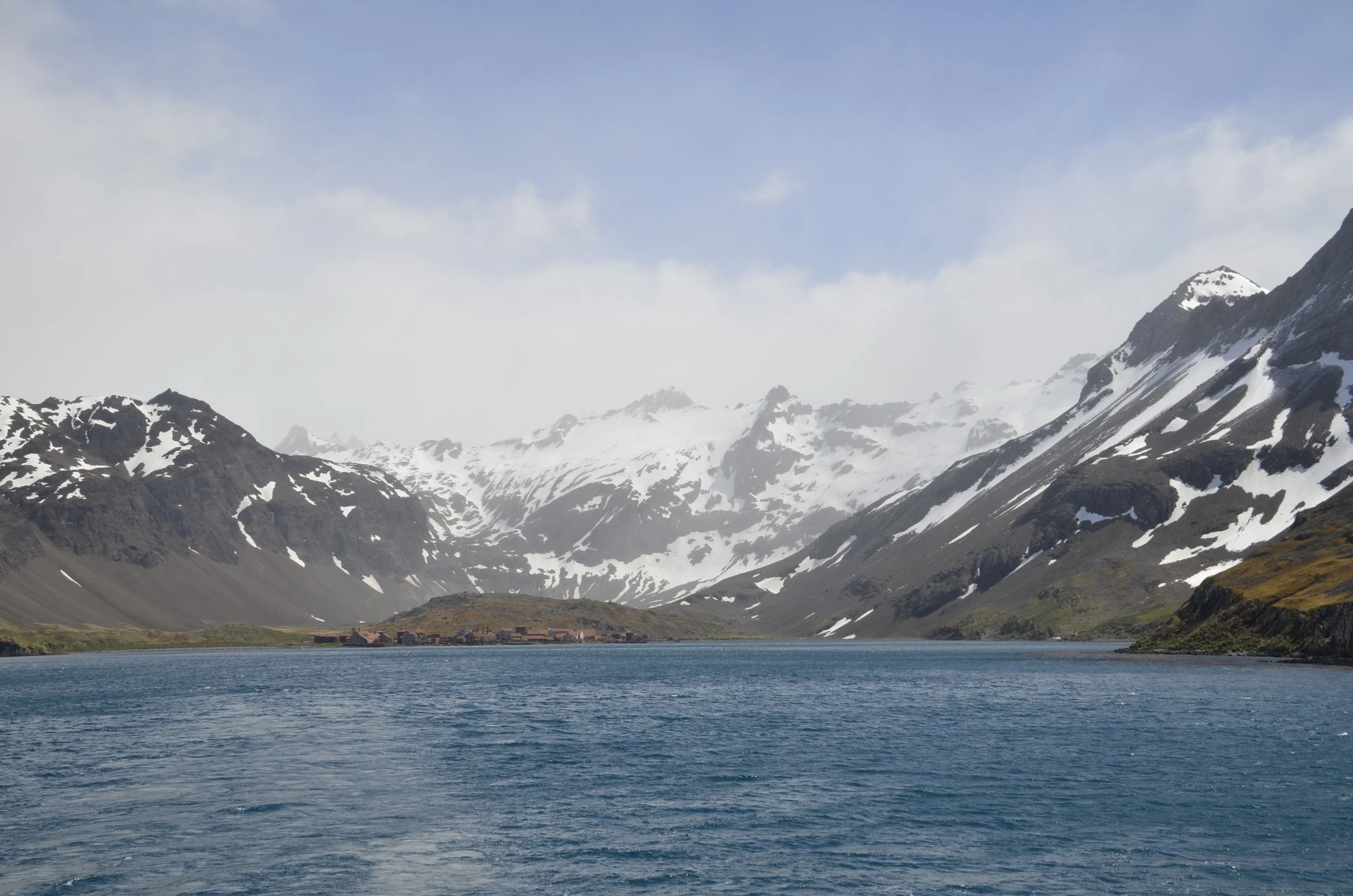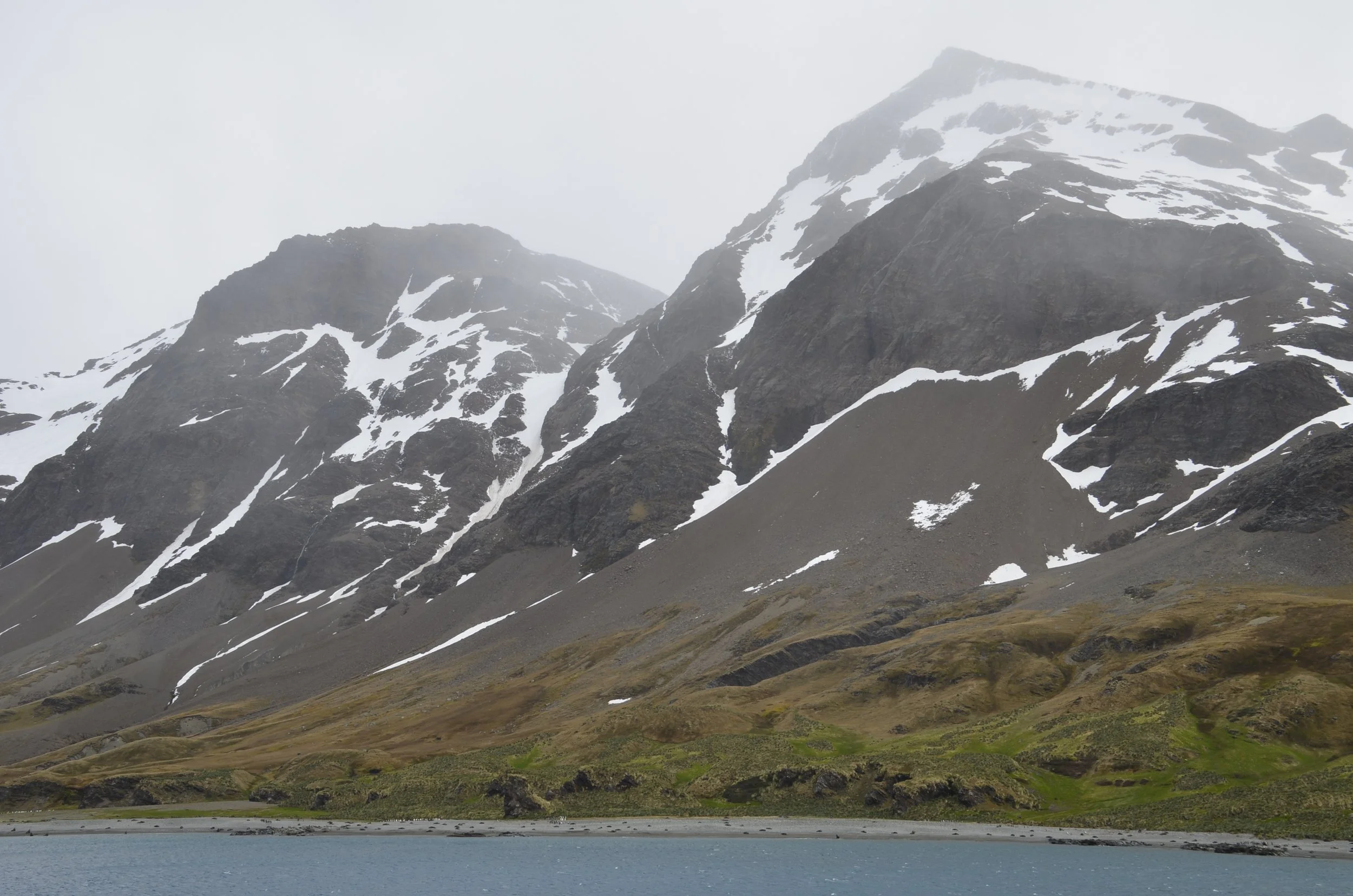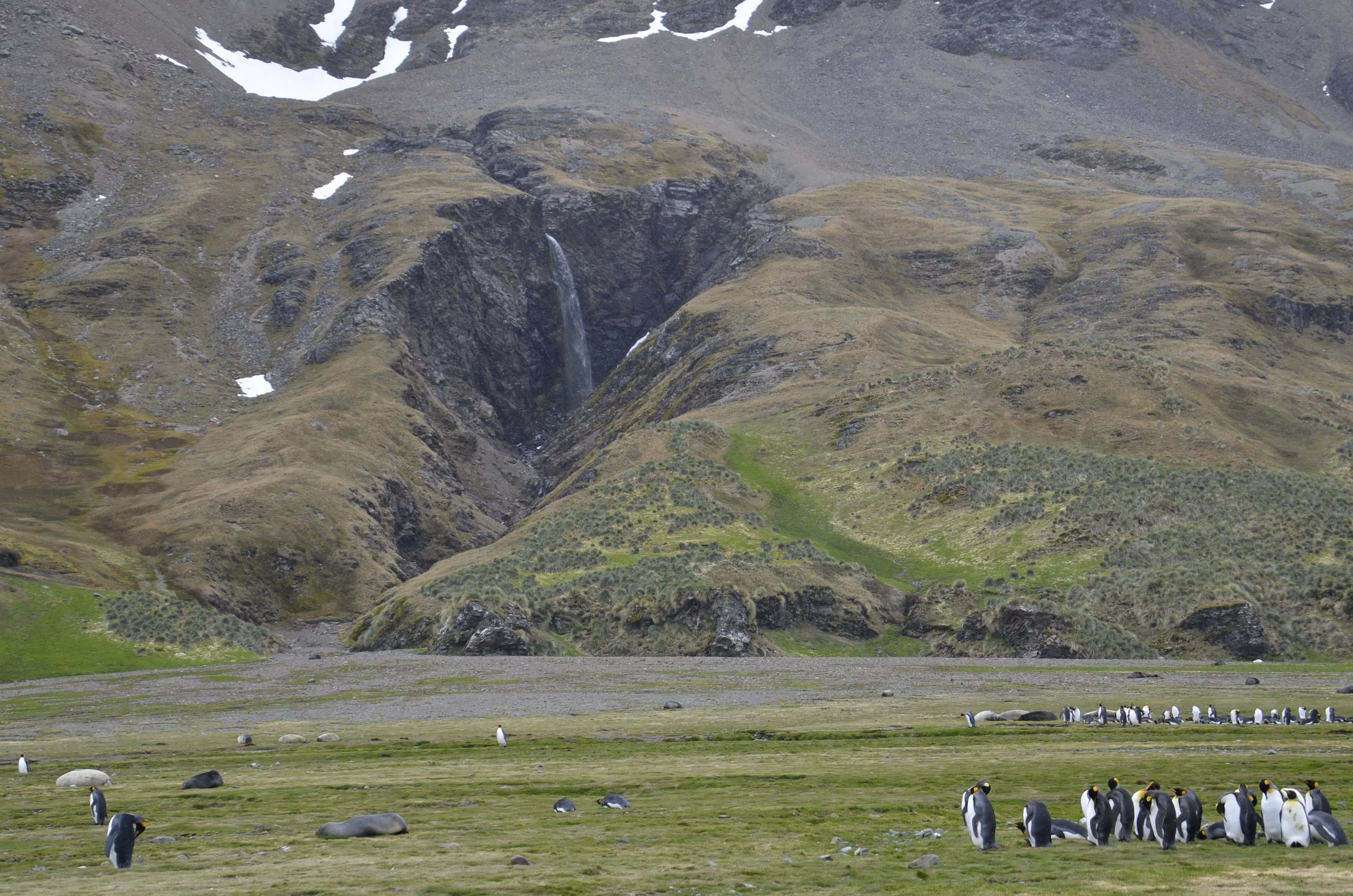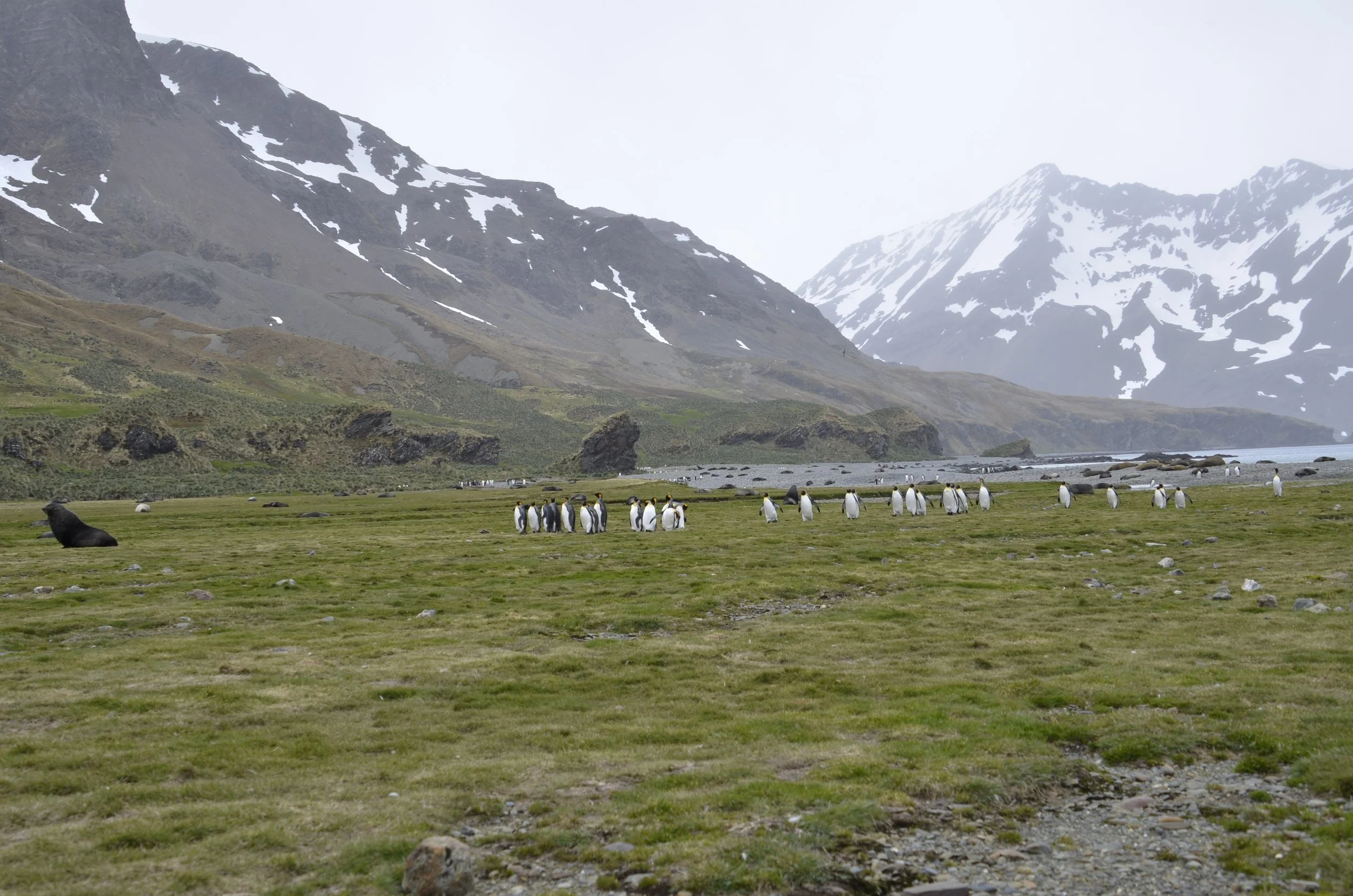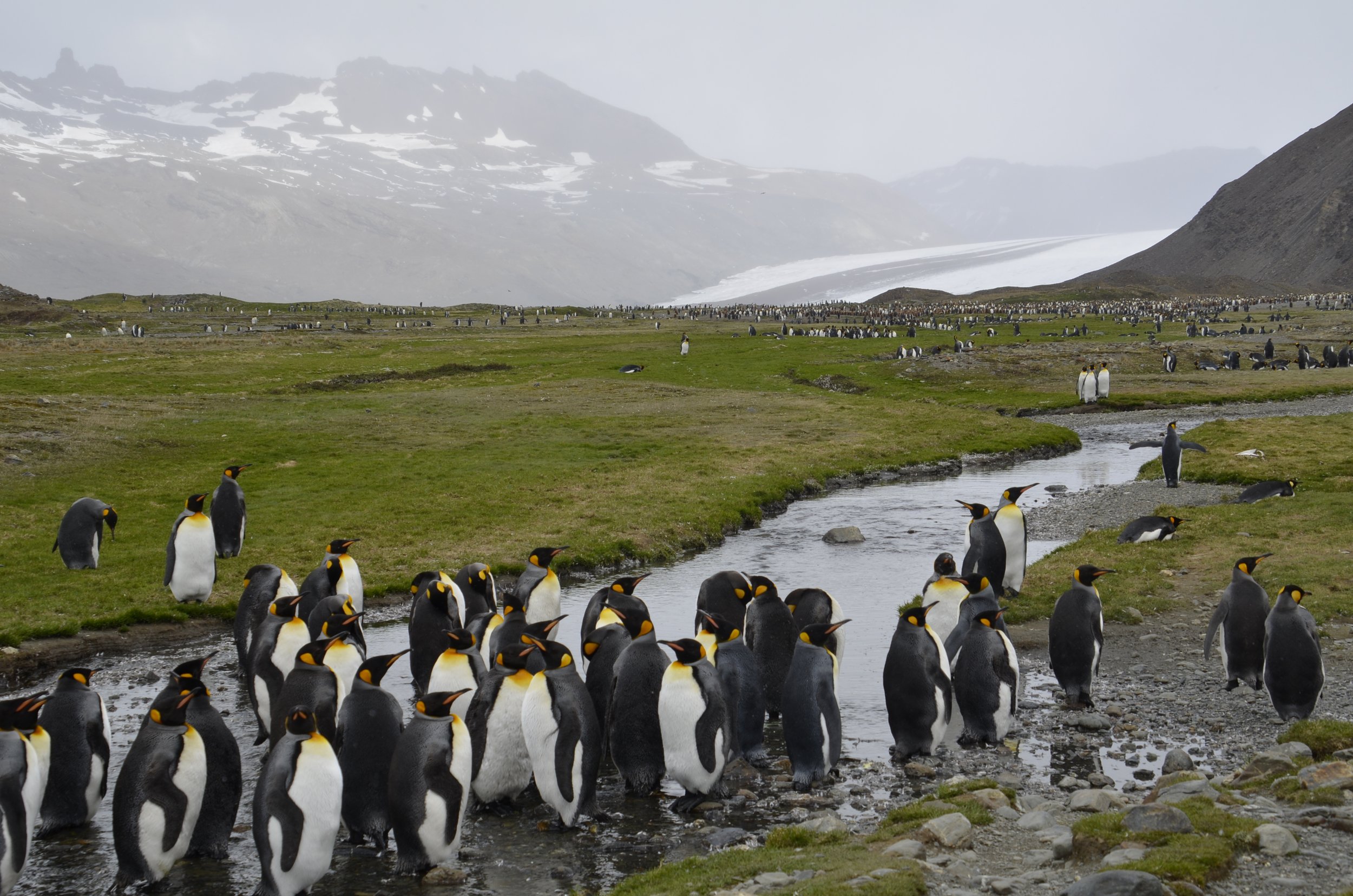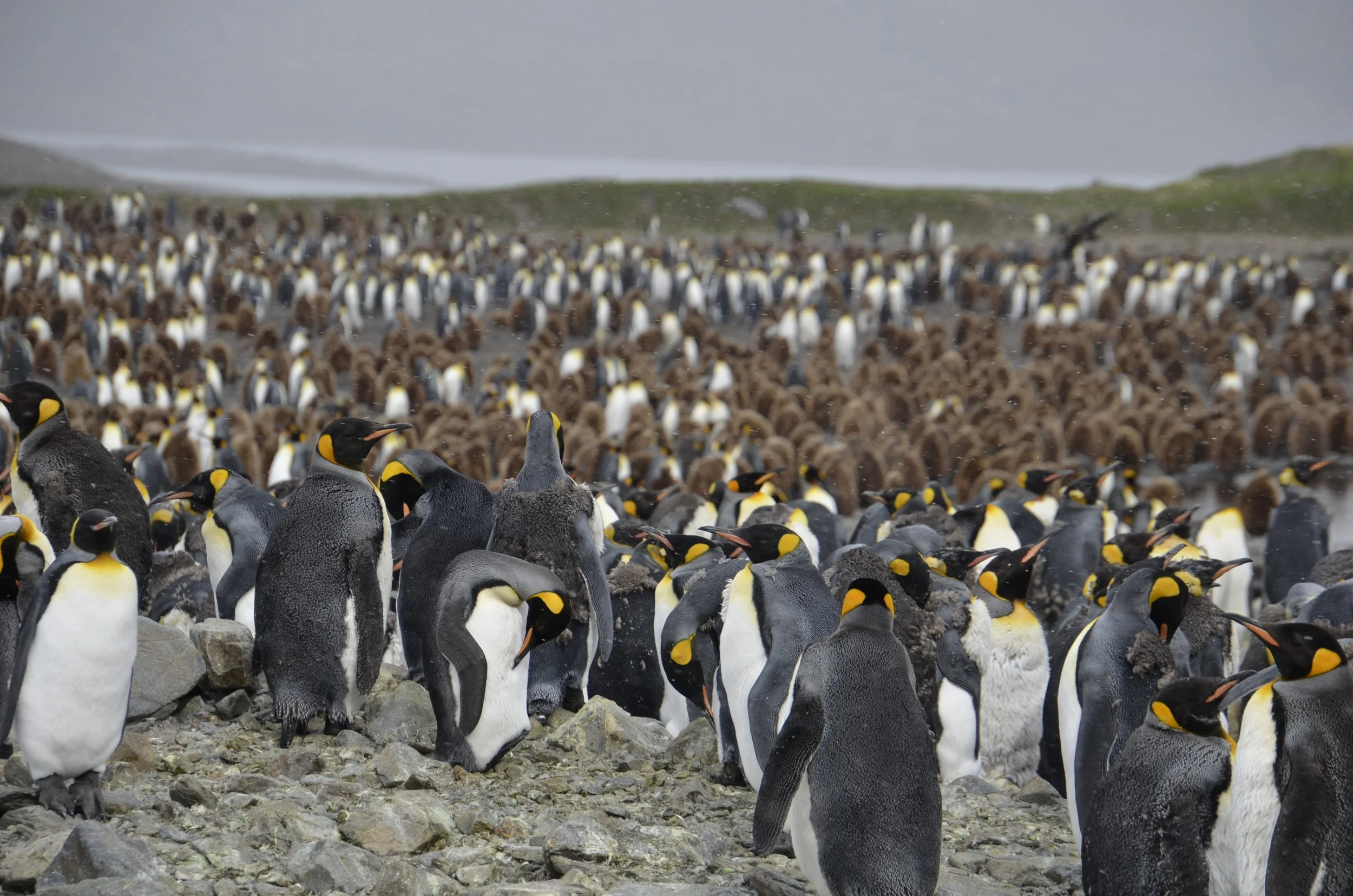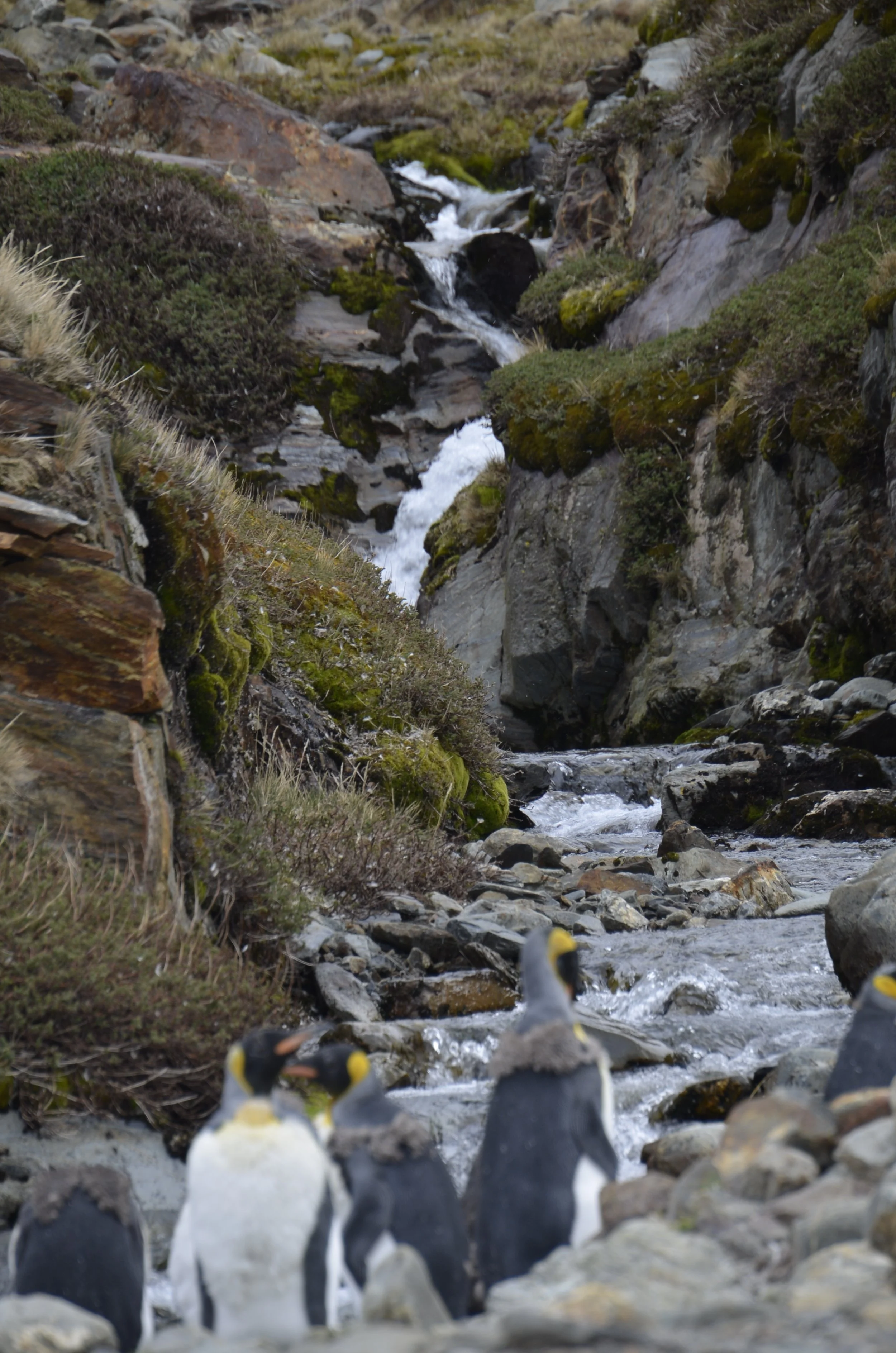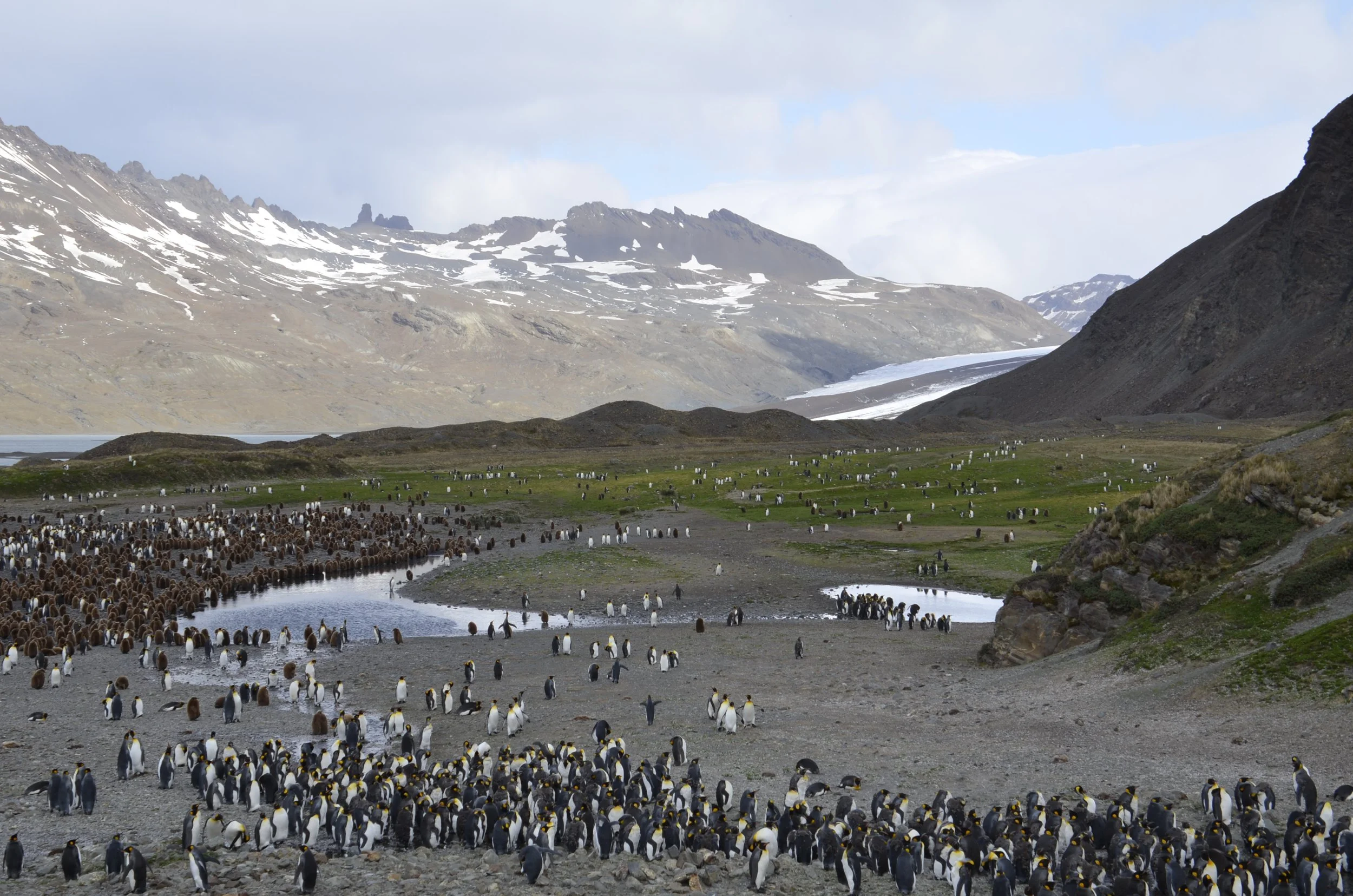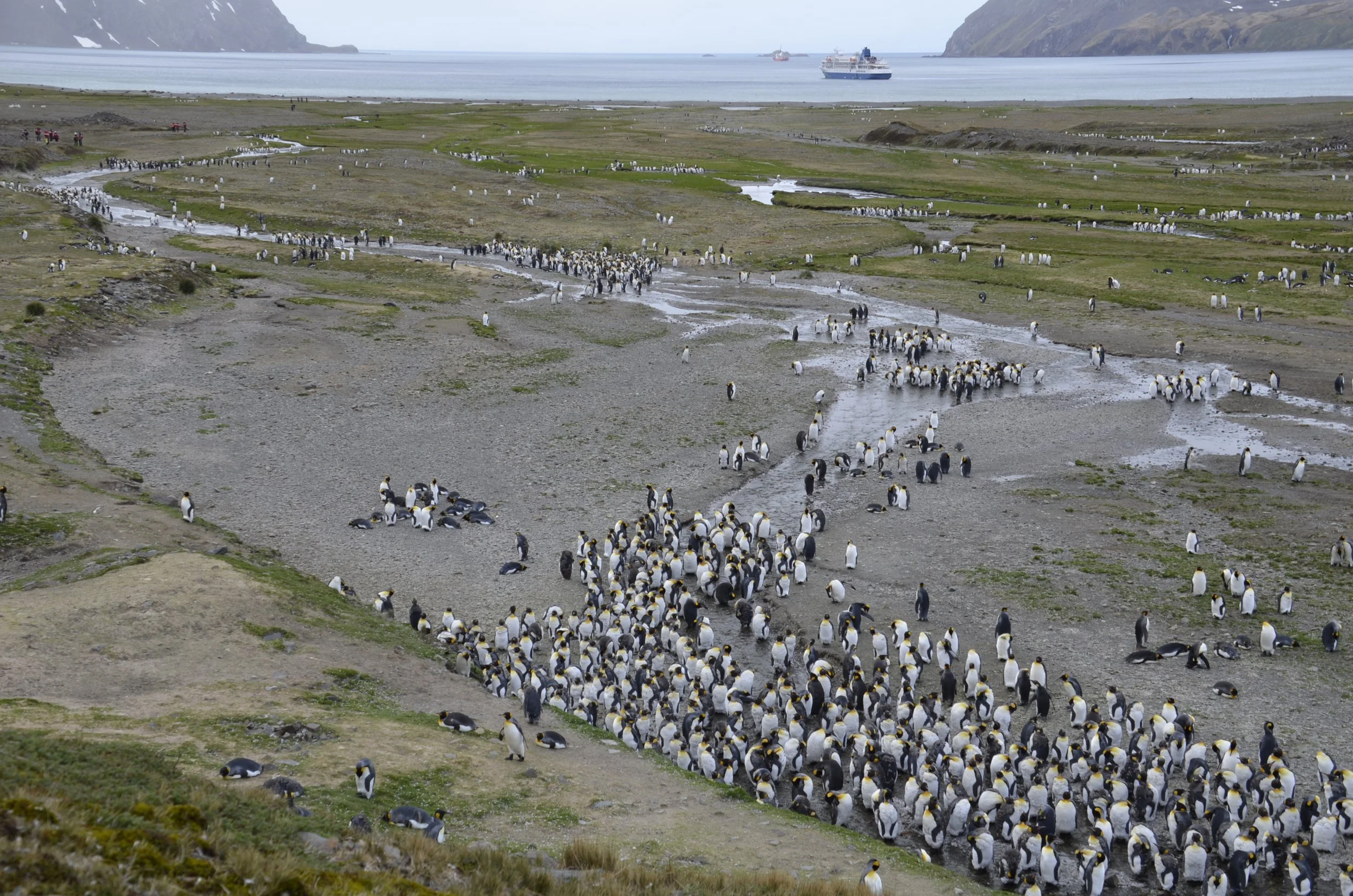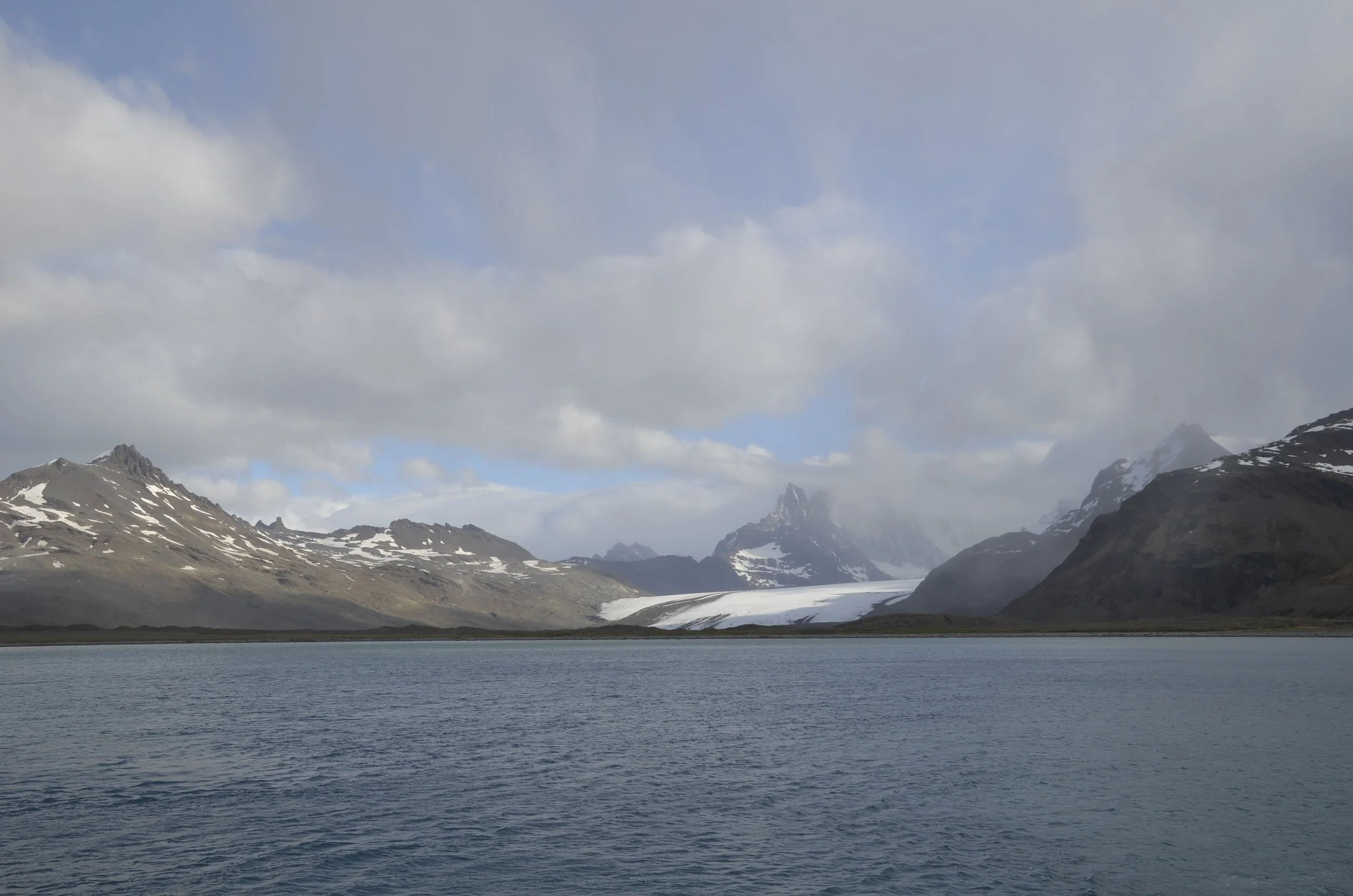More South Georgia
Our next stops were to whaling stations. I won’t go into the sad history of this, but the coves or bays they were located in were quite protected and beautiful. Grytviken is the first (and only) one to have been restored, and we could wander around it.
This is how we went out for excursions –
We would get dressed in waterproof jackets and pants, and pull on our tall rubber boots (on loan from the boat). We would then load 10 people per Zodiac, and because the Seaventure is pretty small, all passengers could go ashore at roughly the same time. If we went on land, we were given a quick briefing of where we could and could not go, as well as when the last Zodiac back to the boat left. Depending on the weather, we’d spend anywhere from 1-2 hours wandering and taking pictures.
At this site, we spent little time around the station…
… as we wanted to join the hike going up the hill above the station and bay. But first, this is how a Fur Seal sounds when he’s moving toward you. I was surprised by how high pitched it was – (remember to see & hear the video, open this email in your browser, with the link at the bottom of this page)
I kind of liked the rusting tank as a nice contrasting background for the Antarctic Tern –
In the next picture you can see the kelp as the dark patches in the water in the bay. The freshwater lake is in the hill above the station, and it provided both water and hydroelectric power for the station.
We hiked up quite a bit of broken shale, which along with the different colored patches of lichen, was pretty photogenic.
Rats “infested” South Georgia when the first whaling ships arrived 150 years ago, and unfortunately they thrived. They greatly depleted the endemic bird populations (including penguins) due to preying on eggs and young chicks that were in nests on or in the ground because there are no trees on the island. In 2011 the South Georgia Heritage Foundation began a rat eradication process by dropping poisoned food pellets by helicopter over any land with vegetation. A large percentage of the island is actually continually covered by snow and ice, thus limiting the areas that needed to be treated. Also, glaciers form a natural barrier that the rats can’t cross and reinfest an area that has been treated. In 2017 the island was declared rat free! This allowed this beautiful Yellow-billed Pintail Duck, which is endemic to South Georgia, to again be common on the island -
Our next stop was Stromness, which was a bigger whaling station. It is just now being assessed as to the viability of opening it to tours, but first asbestos has to be cleared, and falling down buildings need to be supported.
Again, the surrounding area was just stunning –
Because there were too many Fur Seals on the beach…
… it wasn’t safe to land, so we took a Zodiac tour instead. And an Antarctic Cormorant joined us! Our guide said she has been coming to South Georgia for 7 years, and she’d never seen this happen before.
S/he hitched a ride for 15-20 minutes!
This pair on the shore was courting –
Leith Harbour was a large station, but we just did a sail-by and took in the majestic surroundings.
Fortuna Bay -
… had a fairly large King Penguin colony back about 1 km from the beach. You reached it by walking down the broad plain left behind as the glacier in back is retreating. It was quite picturesque…
… and it was pretty fun walking beside lines of penguins also heading back.
A number of them were cooling off in the streams flowing down -
There were more “moulters” here than we had seen at previous sites, and we were cautioned not to encroach on them or cause them to move.This is because they can’t go in the water until they have fully shed their old coat and become waterproof again, and thus have to be fasting until then.
I liked this little side valley –
Another awesome vista (showing the glacier melt-water)…
… and this view showing the expanse of the valley and beach –
As we were leaving, the sharp peaks behind the glacier finally came free of the clouds and gave us a great send off.

